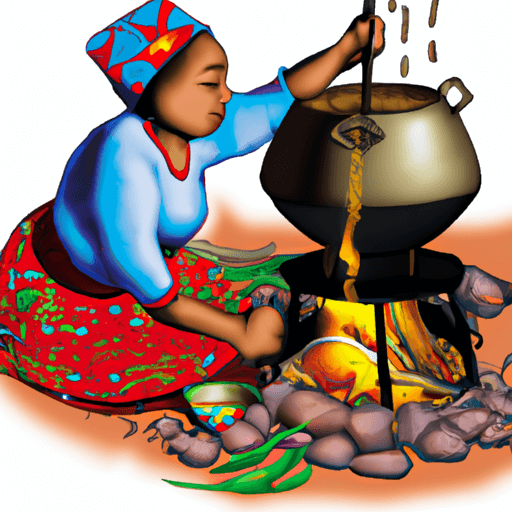Indigenous Culinary Techniques Around the World
As diverse as the world's cultures are, so are their culinary traditions and techniques. Indigenous societies around the world have utilized the resources at their disposal to develop unique food preparation methods, tools, and ingredients, often intertwining their cultural identity with their culinary practices. This article is an exploration into the rich diversity of indigenous culinary techniques, the history behind them, and their influence on both local and global cuisine.
Ingredients, Tools, and Techniques
Different indigenous societies have cultivated distinctive culinary identities based on their surrounding resources. For instance, Pacific Northwest tribes like the Haida specialized in smoking and drying seafood, while the Berbers of North Africa have perfected slow-roasting techniques using earthen ovens called 'tagines'.
In Amazonian tribes, cassava is a staple ingredient, often processed using a 'tipiti', a handwoven press to drain the poisonous juice from the root. On the other hand, the Maasai people of East Africa rely heavily on their livestock, thus dairy products like milk and blood are a significant part of their diet.
Unique Dishes and Their Cultural Significance
These indigenous culinary techniques give rise to truly unique dishes. The Inuit people of the Arctic, for example, enjoy raw fish and meat dishes such as 'muktuk', whale skin and blubber. In contrast, native American tribes such as the Navajo are renowned for their 'fry bread', a delicacy born out of adversity during the Long Walk in the 19th century.
Impact on Local Lifestyle
Food preparation and culinary traditions often shape the lifestyle of the community. For instance, the annual 'mopane worm' harvest in Southern Africa is not just a source of food, but a social gathering that brings the community together. In some indigenous cultures, such as in the Iroquoian society, farming and food preparation have social and spiritual implications, with agricultural responsibilities often divided between genders.
Preservation and Adaptation
As modernization takes charge, many indigenous culinary techniques are at risk of being lost. However, efforts are being made to preserve and adapt these techniques in contemporary culinary practices. Chefs are increasingly incorporating indigenous ingredients and techniques into their menus, while initiatives like the Indigenous Food Lab are working towards preserving indigenous food knowledge and promoting sustainability.
Contributions to Sustainability
Indigenous culinary techniques often prioritize sustainability, using local resources responsibly, and recycling waste. For instance, the 'Three Sisters' farming technique used by Native Americans encourages biodiversity and sustainable farming. Through maintaining and adapting these techniques, we can learn valuable lessons about sustainable living and food production.
Conclusion
In a world that is increasingly interconnected, it is essential to acknowledge the rich diversity of indigenous culinary traditions. They offer a treasure trove of unique flavors, sustainable practices, and cultural stories that continue to shape our global culinary landscape. Let us appreciate, preserve, and celebrate these indigenous culinary techniques, contributing to the vibrancy and diversity of world cuisine.


















Comments
Leave a Comment